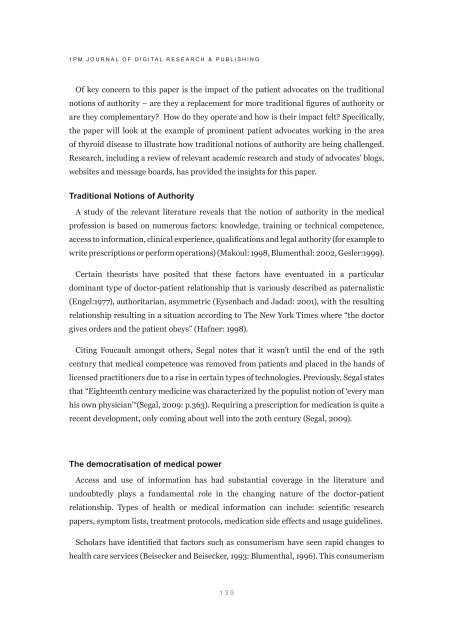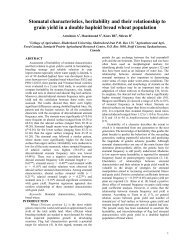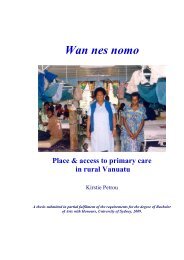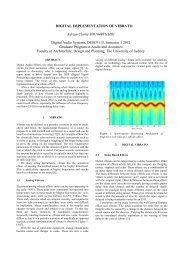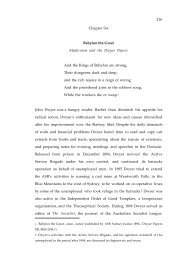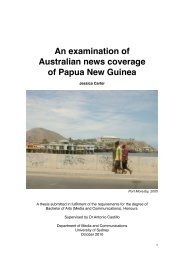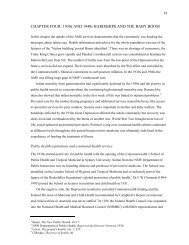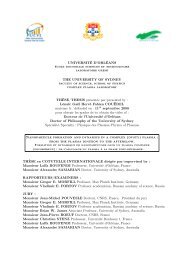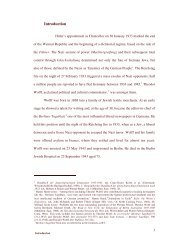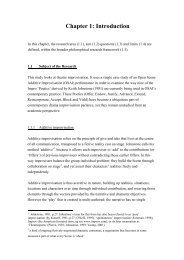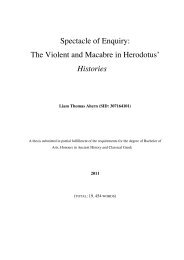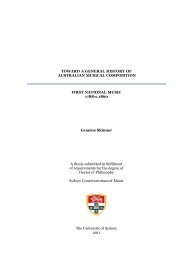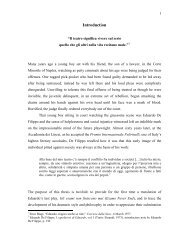journal of digital research & publishing - The Sydney eScholarship ...
journal of digital research & publishing - The Sydney eScholarship ...
journal of digital research & publishing - The Sydney eScholarship ...
Create successful ePaper yourself
Turn your PDF publications into a flip-book with our unique Google optimized e-Paper software.
1 P M J O U R N A L O F D I G I T A L R ESEARCH & P UBLISHING<br />
Of key concern to this paper is the impact <strong>of</strong> the patient advocates on the traditional<br />
"76$7"*&7D&3(6+7>$69&c&3>%&6+%9&3&>%'#35%0%"6&D7>&07>%&6>38$6$7"3#&4,(>%*&7D&3(6+7>$69&7>&<br />
3>%&6+%9&570'#%0%"63>9p&&j7G&87&6+%9&7'%>36%&3"8&+7G&$*&6+%$>&$0'356&D%#6p&A'%5$453##9S&<br />
the paper will look at the example <strong>of</strong> prominent patient advocates working in the area<br />
<strong>of</strong> thyroid disease to illustrate how traditional notions <strong>of</strong> authority are being challenged.<br />
Research, including a review <strong>of</strong> relevant academic <strong>research</strong> and study <strong>of</strong> advocates’ blogs,<br />
websites and message boards, has provided the insights for this paper.<br />
Traditional Notions <strong>of</strong> Authority<br />
A study <strong>of</strong> the relevant literature reveals that the notion <strong>of</strong> authority in the medical<br />
pr<strong>of</strong>ession is based on numerous factors: knowledge, training or technical competence,<br />
355%**&67&$"D7>036$7"S&5#$"$53#&%P'%>$%"5%S&h(3#$4536$7"*&3"8&#%,3#&3(6+7>$69&.D7>&%P30'#%&67&<br />
write prescriptions or perform operations) (Makoul: 1998, Blumenthal: 2002, Gesler:1999).<br />
Certain theorists have posited that these factors have eventuated in a particular<br />
dominant type <strong>of</strong> doctorpatient relationship that is variously described as paternalistic<br />
(Engel:1977), authoritarian, asymmetric (Eysenbach and Jadad: 2001), with the resulting<br />
relationship resulting in a situation according to <strong>The</strong> New York Times where “the doctor<br />
gives orders and the patient obeys” (Hafner: 1998).<br />
Citing Foucault amongst others, Segal notes that it wasn’t until the end <strong>of</strong> the 19th<br />
century that medical competence was removed from patients and placed in the hands <strong>of</strong><br />
licensed practitioners due to a rise in certain types <strong>of</strong> technologies. Previously, Segal states<br />
that “Eighteenth century medicine was characterized by the populist notion <strong>of</strong> ‘every man<br />
his own physician’“(Segal, 2009: p.363). Requiring a prescription for medication is quite a<br />
recent development, only coming about well into the 20th century (Segal, 2009).<br />
<strong>The</strong> democratisation <strong>of</strong> medical power<br />
Access and use <strong>of</strong> information has had substantial coverage in the literature and<br />
undoubtedly plays a fundamental role in the changing nature <strong>of</strong> the doctorpatient<br />
>%#36$7"*+$'M& B9'%*& 7D& +%3#6+& 7>& 0%8$53#& $"D7>036$7"& 53"& $"5#(8%-& *5$%"6$45& >%*%3>5+&<br />
papers, symptom lists, treatment protocols, medication side effects and usage guidelines.<br />
A5+7#3>*&+3I%&$8%"6$4%8&6+36&D3567>*&*(5+&3*&57"*(0%>$*0&+3I%&*%%"&>3'$8&5+3",%*&67&<br />
health care services (Beisecker and Beisecker, 1993: Blumenthal, 1996). This consumerism<br />
139


